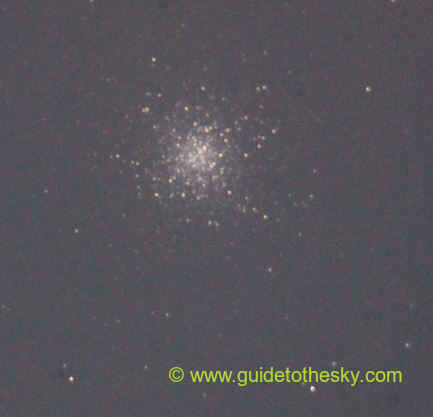Messier 4 - Scorpius

M4 - http://www.guidetothesky.com/images/n/m4_5s.jpg - en la IA
Messier 4 (M4 or NGC 6121) is a globular cluster in the constellation Scorpius. Here's a detailed breakdown of what makes it interesting:
Key Facts:
- Type: Globular Cluster (a densely packed, spherical collection of stars)
- Constellation: Scorpius
- Distance: Approximately 7,200 light-years from Earth
- Diameter: Roughly 75 light-years
- Magnitude: 5.6 (relatively bright, making it observable with binoculars under good conditions)
- Age: Estimated to be 12.2 billion years old, making it a very ancient object.
- Discovery: Discovered by Philippe Loys de Chéseaux in 1746 and cataloged by Charles Messier in 1764.
Why Messier 4 is Significant:
-
Proximity: M4 is one of the closest globular clusters to our solar system, which makes it a popular target for amateur and professional astronomers alike. Its closeness also makes it appear larger and more resolved than more distant globular clusters.
-
Resolvability: It's easily resolved into individual stars with even moderate-sized telescopes. This makes it a great object for observing the varied colors and brightnesses of the stars within.
-
Interesting Stellar Population: M4 contains a variety of star types, including:
- White Dwarfs: Studies of white dwarfs in M4 have helped astronomers determine the age of the cluster.
- Millisecond Pulsar: It hosts PSR B1620-26, a millisecond pulsar, and its circumbinary planet, PSR B1620-26 b. This planet is one of the oldest known extrasolar planets.
- Evolved Stars: The cluster is rich in red giants and other evolved stars.
-
Bar Structure: M4 exhibits a distinct bar-like structure through its center, which is an unusual feature for globular clusters.
-
Observational Tips:
- Location: Look for it near the bright star Antares in Scorpius.
- Best Time to Observe: Southern Hemisphere (May-August). Northern Hemisphere can observe in late Spring to Summer.
- Equipment: Binoculars or a small telescope will reveal the cluster as a fuzzy ball of light. Larger telescopes will resolve many individual stars.
-
Scientific Value: Globular clusters like M4 are crucial for studying stellar evolution, the age of the universe, and the formation of our galaxy. They serve as "living laboratories" for understanding how stars behave in dense environments.
In summary, Messier 4 is a relatively bright, nearby, and easily resolved globular cluster that offers a beautiful and fascinating glimpse into the ancient history of our galaxy. Its proximity, diverse stellar population, and unusual features make it a favorite target for astronomers and stargazers of all levels.
Más información sobre Messier 4 en NASA/IPAC.
Mapa alrededor de Messier 4
Otros identificadores de M4:
"C 1620-264" ,"GCl 41" ,"M 4" ,"NGC 6121" ,"[KPS2012] MWSC 2396","CD-26 11314" ,"GCRV 5569 E" ,"HD 147552" ,

